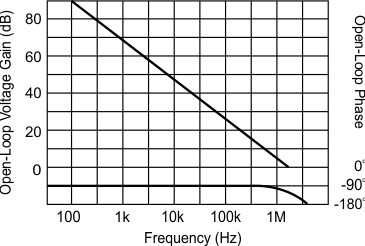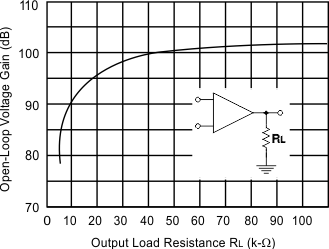SLUS871D January 2009 – December 2016 UC1846-SP
PRODUCTION DATA.
- 1 Features
- 2 Applications
- 3 Description
- 4 Revision History
- 5 Pin Configuration and Functions
- 6 Specifications
- 7 Detailed Description
- 8 Application and Implementation
- 9 Power Supply Recommendations
- 10Layout
- 11Device and Documentation Support
- 12Mechanical, Packaging, and Orderable Information
封装选项
机械数据 (封装 | 引脚)
散热焊盘机械数据 (封装 | 引脚)
订购信息
6 Specifications
6.1 Absolute Maximum Ratings
over operating free-air temperature range (unless otherwise noted)(1)(2)| MIN | MAX | UNIT | |||
|---|---|---|---|---|---|
| VCC | Supply voltage | 40 | V | ||
| Collector supply voltage | 40 | V | |||
| VI | Analog input voltage (C/S-, C/S+, E/A+, E/A-, Shutdown) | –0.3 | VIN | V | |
| IO | Output current, source or sink | 500 | mA | ||
| Reference output current | –30 | mA | |||
| Sync output current | –5 | mA | |||
| Error amplifier output current | –5 | mA | |||
| Soft-start sink current | 50 | mA | |||
| Oscillator charging current | 5 | mA | |||
| TJ(max) | Maximum junction temperature | 150 | °C | ||
| Tlead | Lead temperature (soldering, 10 s) | 300 | °C | ||
| Tstg | Storage temperature | –65 | 150 | °C | |
(1) Stresses beyond those listed under Absolute Maximum Ratings may cause permanent damage to the device. These are stress ratings only, and functional operation of the device at these or any other conditions beyond those indicated under Recommended Operating Conditions is not implied. Exposure to absolute-maximum-rated conditions for extended periods may affect device reliability.
(2) All voltages are with respect to ground. Currents are positive into, negative out of the specified terminal.
6.2 ESD Ratings
| VALUE | UNIT | |||
|---|---|---|---|---|
| V(ESD) | Electrostatic discharge | Human-body model (HBM), per ANSI/ESDA/JEDEC JS-001(1) | ±2000 | V |
(1) JEDEC document JEP155 states that 500-V HBM allows safe manufacturing with a standard ESD control process.
6.3 Recommended Operating Conditions
over operating free-air temperature range (unless otherwise noted)| MIN | NOM | MAX | UNIT | ||
|---|---|---|---|---|---|
| TJ | Operating junction temperature | –55 | 125 | °C | |
6.4 Thermal Information
| THERMAL METRIC(1) | UC1846-SP | UNIT | |||
|---|---|---|---|---|---|
| J (CDIP) | W (CFP) | FK (LCCC) | |||
| 16 PINS | 16 PINS | 20 PINS | |||
| RθJA | Junction-to-ambient thermal resistance | 104.2 | 105.2 | N/A | °C/W |
| RθJC(top) | Junction-to-case (top) thermal resistance | N/A | N/A | N/A | °C/W |
| RθJB | Junction-to-board thermal resistance | 36.6 | 96.8 | N/A | °C/W |
| ψJT | Junction-to-top characterization parameter | 25.0 | 24.0 | N/A | °C/W |
| ψJB | Junction-to-board characterization parameter | 27.9 | 82.6 | N/A | °C/W |
| RθJC(bot) | Junction-to-case (bottom) thermal resistance | 8.2 | 8.5 | 9.0 | °C/W |
(1) For more information about traditional and new thermal metrics, see the Semiconductor and IC Package Thermal Metrics application report, SPRA953.
6.5 Electrical Characteristics
VIN = 15 V, RT = 10 kΩ, CT = 4.7 nF, TA = TJ = –55°C to 125°C (unless otherwise noted)| PARAMETER | TEST CONDITIONS | MIN | TYP | MAX | UNIT | |
|---|---|---|---|---|---|---|
| REFERENCE | ||||||
| Output voltage | TJ = 25°C, IO = 1 mA | 5.04 | 5.1 | 5.16 | V | |
| Line regulation | VIN = 8 to 40 V | 5 | 20 | mV | ||
| Load regulation | IL = 1 to 10 mA | 3 | 15 | mV | ||
| Temperature stability | Over operating range | 0.4 | mV/°C | |||
| Total output variation | Over line, load, and temperature(1) | 5 | 5.2 | V | ||
| Output noise voltage | 10 Hz ≤ ƒ ≤ 10 kHz, TJ = 25°C(1) | 100 | μV | |||
| Long-term stability | TJ = 125°C, 1000 hr | 5 | mV | |||
| Short-circuit output current | VREF = 0 V | –10 | –45 | mA | ||
| OSCILLATOR | ||||||
| Initial accuracy | TJ = 25°C | 39 | 43 | 47 | kHz | |
| Voltage stability | VIN = 8 to 40 V | –1% | 2% | |||
| Temperature stability | Over operating range | –1% | ||||
| Sync output high level | 3.9 | 4.35 | V | |||
| Sync output low level | 2.3 | 2.5 | V | |||
| Sync input high level | CT = 0 V | 3.9 | V | |||
| Sync input low level | CT = 0 V | 2.5 | V | |||
| Sync input current | Sync = 3.9 V, CT = 0 V | 1.3 | 1.5 | mA | ||
| ERROR AMPLIFIER | ||||||
| Input offset voltage | 0.5 | 5 | mV | |||
| Input bias current | –1 | –0.6 | μA | |||
| Input offset current | 40 | 250 | nA | |||
| Common mode range | VIN = 8 to 40 V | 0 | VIN – 2 | V | ||
| Open-loop voltage gain | ΔVO = 1.2 to 3 V, VCM = 2 V | 80 | 105 | dB | ||
| Unity-gain bandwidth | TJ = 25°C(1) | 0.7 | 1 | MHZ | ||
| CMRR | VCM = 0 to 38 V, VIN = 40 V | 75 | 100 | dB | ||
| PSRR | VIN = 8 to 40 V | 80 | 105 | dB | ||
| Output sink current | VID = –15 mV to –5 V, Comp = 1.2 V | 2 | 6 | mA | ||
| Output source current | VID = 15 mV to 5 V, Comp = 2.5 V | –0.5 | –0.4 | mA | ||
| High-level output voltage | RL = (Comp) 15 kΩ | 4.3 | 4.6 | V | ||
| Low-level output voltage | RL = (Comp) 15 kΩ | 0.7 | 1 | V | ||
| CURRENT SENSE AMPLIFIER | ||||||
| Amplifier gain | VC/S– = 0 V, C/L SS open(2)(3) | 2.5 | 2.75 | 3.1 | V/V | |
| Maximum differential input signal (VC/S+ – VC/S–) |
C/L SS open(2), RL (Comp)= 15 kΩ | 1.1 | 1.2 | V | ||
| Input offset voltage | VC/L SS = 0.5 V, Comp open(2) | 5 | 25 | mV | ||
| CMRR | VCM = 1 to 12 V | 60 | 83 | dB | ||
| PSRR | VIN = 8 to 40 V | 60 | 84 | dB | ||
| Input bias current | VC/L SS = 0.5 V, Comp open(2) | –10 | –2.5 | μA | ||
| Input offset current | VC/L SS = 0.5 V, Comp open(2) | 0.08 | 1 | μA | ||
| Input common-mode range | VIN – 3 | V | ||||
| Delay to outputs | TJ = 25°C(1) | 200 | 500 | ns | ||
| CURRENT LIMIT ADJUST | ||||||
| Current limit offset | VC/S– = 0 V, VC/S+ = 0 V, comp open(2) | 0.45 | 0.5 | 0.55 | V | |
| Input bias current | VE/A+ = VREF, VE/A– = 0 V | –30 | –10 | μA | ||
| SHUTDOWN TERMINAL | ||||||
| Threshold voltage | 250 | 350 | 400 | mV | ||
| Input voltage range | 0 | VIN | V | |||
| Minimum latching current (IC/S SS)(4) | 3 | 1.5 | mA | |||
| Maximum non-latching current (IC/S SS)(5) | 1.5 | 0.8 | mA | |||
| Delay to outputs | TJ = 25°C(1) | 300 | 600 | ns | ||
| OUTPUT | ||||||
| Collector-emitter voltage | 40 | V | ||||
| Collector leakage current | VC = 40 V | 200 | μA | |||
| Output low-level voltage | ISINK = 20 mA | 0.1 | 0.4 | V | ||
| ISINK = 100 mA | 0.4 | 2.1 | V | |||
| Output high-level voltage | ISOURCE = 20 mA | 13 | 13.5 | V | ||
| ISOURCE = 100 mA | 12 | 13.5 | V | |||
| Rise time | CL = 1 nF, TJ = 25°C(1) | 50 | 300 | ns | ||
| Fall time | CL = 1 nF, TJ = 25°C(1) | 50 | 300 | ns | ||
| UVLO | ||||||
| Start-up threshold | 7.7 | 8 | V | |||
| Threshold hysteresis | 0.75 | V | ||||
| TOTAL STANDBY CURRENT | ||||||
| Supply current | 17 | 21 | mA | |||
(1) Parameters ensured by design and/or characterization, if not production tested.
(2) Parameter measured at trip point of latch with VE/A+ = VREF, VE/A– = 0 V.
(3) Amplifier gain defined as: G = ΔVComp/ΔVC/S+; VC/S+ = 0 to 1 V.
(4) Current into C/S SS required to latch circuit in shutdown state.
(5) Current into C/S SS assured not to latch circuit in shutdown state.
6.6 Typical Characteristics

| VIN = 20 V | TJ = 25°C |

.
Figure 2. Error Amplifier Open-Loop DC Gain vs Load Resistance
| VIN = 20 V | TJ = 25°C |